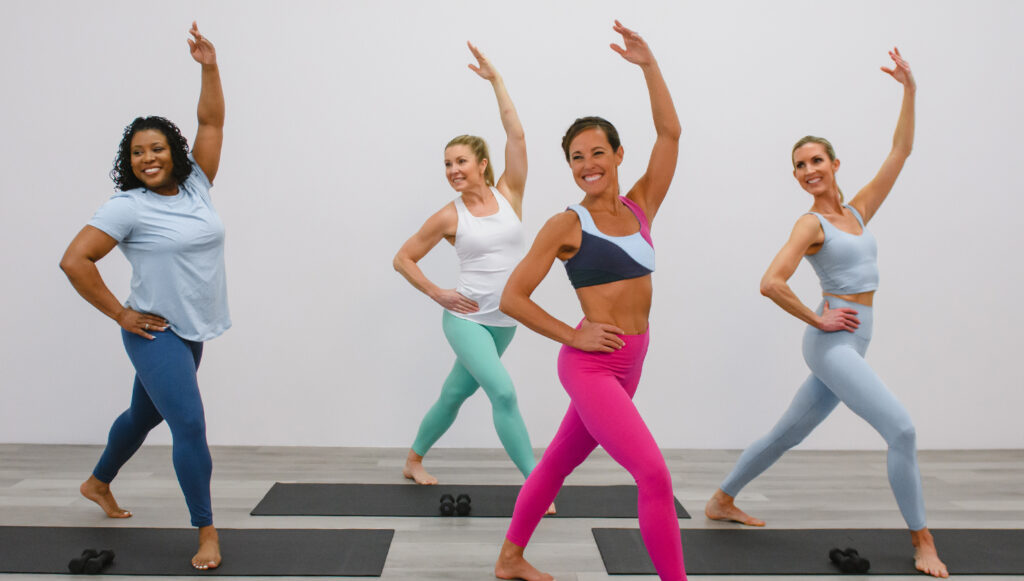
Lindsay Brin, Exercise Science
Your training schedule should be highly individualized to see results! Ectomorph, Endomorph, Mesomorph. Slim, curvy, average. These are labels that we’ve all heard to describe a person’s body type, or somatotype. But what do they mean? And do they have an effect on how we should train? YES.
The first somatotypes were developed by Dr. W.H. Sheldon back in the 1940s. Dr. Sheldon theorized that a person’s body type could be used to determine her or his personality (this is no longer suggested). He established three somatotypes – Ectomorph, Endomorph and Mesomorph — based on his study participants’ height and weight data and their accompanying front, side and back photos. Today, somatotypes are used mostly determine how one could train, as opposed to how they should behave.
I grew up dancing. I’m 5’1” so I never had the long, elegant lines, but I had the natural build and flexibility. I’m a mesomorph body type. In my 20s and 30s I forced myself to exercise 5x a week. I did a combination of hot Pilates, barre and some strength training. I ran, I did HIIT cardio. In my late 30s this no longer provided results. Instead, my legs had cellulite and my pant size was getting bigger.
Because I’ve studied Exercise Science since my 20s, I had to figure out why. The fitness industry tells us more is more, but it depends on your body type, stress levels and hormones. Your training schedule should be highly individualized to see results.
After age 35 we lose 3-8% muscle with each decade. So how do we preserve and increase strength without the bulk?
Strength can be achieved through barre classes – high reps, lower weight – or traditional strength training – lower reps, higher weight. It can also be achieved through bodyweight, Pilates, etc. Your brain doesn’t recognize the # on a dumbbell. Your body recognizes the tension created in the muscle.
I’ve done the research and made the perfect plans in our weekly schedule. We do intentional exercises for each muscle group. You won’t find multiple squats and lunges, instead we do hip hinges or glute push-ups for the glutes. We do hack squats and releve for the thighs. This creates significant change without bulk. For me and my body type, I thrive in the 3x Per Week schedule with daily walking.
Below are the traits and training suggestions for the three well-known body types. Keep in mind, most people are a blend of two body types, one being more dominant than the other, and don’t fit neatly into one particular category. Take professional athletes for example, with many differing body types, the way athletes train leads to body compositions that are very similar. e.g. swimmers have broad shoulders, long distance runners have runners legs.
If you have a physique goal in mind, you can work to achieve what you believe to be your own perfect form and fall anywhere you wish on the somatotype spectrum. This is simply a loose guide – to help you find what serves your body the best.
Traits: Ectomorphs have a small frame and bone structure with narrow shoulders. They are naturally lean and tend to find it difficult to gain weight. Ectomorphs often state that they have a hard time building muscle, as well.
Training suggestions: As those with an ectomorphic body type find it harder to gain muscle or body weight, a focused, consistent and dedicated full-body strength and resistance training program would assist this type in achieving a toned physique. Although Ectomorphs are genetically predisposed to endurance training (think marathon runner), in order to stimulate muscle tissue, strength training should be the focus and cardio geared more toward improving general health.
Recommendation: 4x Per Week
Traits: Endomorphs have rounder, softer bodies with less natural muscle definition. They usually have larger bone structures. Endomorphs find it more difficult to lose fat, however, they can build muscle rather easily.
Training suggestions: As those with an endomorphic body type find it harder to lose fat, but can gain muscle very easily, a combination of cardiovascular exercise, where cardio is emphasized, meshed with full-body strength training would provide this body type the fat-burning, metabolism-boosting benefits of both worlds.
Recommendation: 5x Per Week with HIIT Cardio
Traits: Mesomorphs are the middle-of-the-road body types. They are characterized as such due to their moderate frames and somewhat athletic build. Of the three somatotypes, Mesomorphs appear most proportionate. Mesomorphs also have the capacity to gain and lose muscle fairly easily. This term also describes those that are naturally muscular with highly responsive muscle cells.
Training suggestions: Since it’s natural for Mesomorphs to gain and lose muscle rather effortlessly, a well-balanced training program is essential. In order to see improved strength while not “bulking”, the Mesomorph must consistently incorporate both cardiovascular and strength workouts into their fitness routine.
Recommendation: 3x Per Week with *walking
*Aim to accumulate 150+ minutes of walking each week. Or choose a combination or walking and/or running.
Keep in mind that it’s not a simple equation. Your age, nutrition, hormones, sleep and stress levels play a role. Overall consistency in exercise, reducing stress and getting good sleep is MORE important and will provide MORE benefits to your health.
